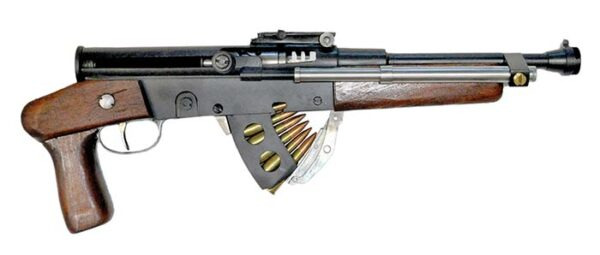this post was submitted on 10 Aug 2024
18 points (100.0% liked)
guns
2580 readers
39 users here now
Rules (Under review):
-
- NO BUYING, SELLING OR TRADING of guns or accessories. Take that to Reddit and /r/GunAccessoriesForSale or Armslist.com
-
- Censor all personally identifiable information in posts including serial numbers on firearms.
-
- Any post or comment advocating illegal action will be removed and the poster warned. A second infraction will result in a ban.
-
- Unironically suggesting the SKS as a usable rifle in the 21st Century when there are things like the AK and AR that cost only a bit more might result in a ban, it depends on how we feel.
-
- Discussion of hunting is acceptable but please put "CW: hunting" in post titles. Debating the ethicality of hunting is also fine, but keep it civil and don't derail other people's threads.
founded 4 years ago
MODERATORS
you are viewing a single comment's thread
view the rest of the comments
view the rest of the comments

What makes a gun a "submachine gun" versus just a regular old machine gun?
The "sub" just refers to it being smaller and less powerful than a proper machine gun, but the term is definitely rather vague about the precise point when something shifts from machine gun to submachine gun. And of course, with the later introduction of assault rifles, you now have something sitting between submachine guns and regular machine guns, so the "sub" part kind of doesn't mean anything anymore. People have mostly settled on using submachine gun to refer to fully-automatic weapons in a pistol caliber, but that's not something that's immediately obvious from the term itself
AFAIK people referred to submachine guns as "machine pistols" for a long time. It's what the "MP" in "MP40" stands for (Maschinenpistole). Of course, the first assault rifle was also called an MP, so who knows? ¯\_(ツ)_/¯
Sort of - there were different terms adopted by different countries. Submachine gun was an American term, while machine pistol was used by the Germans, Soviets (as пистолет-пулемёт) and French (as Pistolet Mitrailleur). The Brits had their own preferred term, machine carbine. The confusing part is that later on, machine pistol was also adopted as a term in American usage, except to refer to a specific subtype of submachine gun (in the most literal sense, just pistols that can shoot in full-auto, like the Stechkin, but also more broadly, really compact SMGs that have a form factor comparable to a pistol).
The StG-44 originally being called an MP was just a trick by the designers, since Hitler was initially opposed to it, so in order to keep developing it they just pretended that they were working on a regular SMG to replace the MP-40, and once it was accepted into service they redesignated it to Sturmgewehr. Interestingly, before the Maschinenpistole designation trick, the earliest prototypes were actually called Maschinenkarabiner - the same term the British used (except the Brits used it for guns in pistol-calibers, while the Germans already had Maschinenpistole for them, so Maschinenkarabiner now referred to automatic stuff in a bigger caliber).
So yeah, there's definitely a bunch of confusing stuff about the terminology - part of the problem is that the focus on the "machine" part made sense when the vast majority of weapons were bolt-action rifles, so having something self-loading was a big deal, and it had to be distinguished from regular guns. But when the vast majority of infantry weapons become self-loading, technically they're all some kind of machine something.
I found a YouTube link in your comment. Here are links to the same video on alternative frontends that protect your privacy: